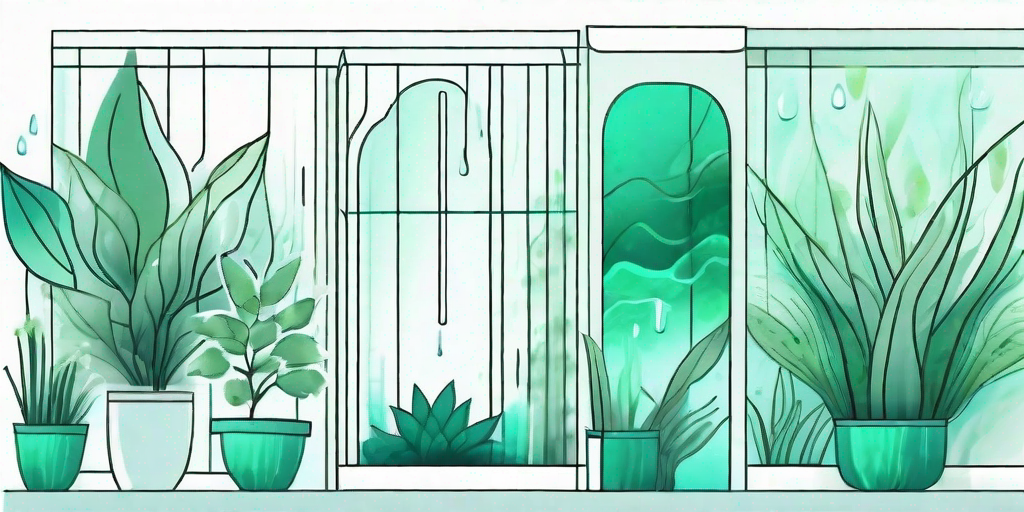
Welcome, green-thumbed warriors and budding botanists! Today, we're going to delve into the world of plant hydration. More specifically, we're going to explore the magic of walls of water, a secret weapon that every gardener should have in their arsenal. So, grab your watering cans and let's dive in!
Understanding the Importance of Plant Hydration
Before we get to the juicy details of walls of water, let's take a moment to appreciate the importance of hydration for our leafy friends. Just like us, plants need water to survive. But it's not just about survival; proper hydration is key to a plant's growth and overall health.
Water is the lifeblood of plants. It's the carrier of nutrients from the soil to the plant cells. It's the medium through which photosynthesis happens. Without water, plants would be as lifeless as a rock concert without a lead guitarist. So, it's safe to say that hydration is a big deal in the plant world.
Signs of Underwatering and Overwatering
Now, you might be thinking, "I water my plants regularly, they should be fine, right?" Well, not necessarily. Both underwatering and overwatering can lead to unhappy plants. Underwatered plants may have wilted, yellow leaves, while overwatered plants may have soft, mushy stems and leaves. It's a delicate balance that requires a keen eye and a gentle hand.
But fear not, dear gardeners, for there is a solution to this watering conundrum. Enter the walls of water.
Introducing Walls of Water
Walls of water, also known as water teepees or plant protectors, are a gardener's best friend. They're essentially plastic cylinders filled with water that surround your plants, creating a mini greenhouse effect. This not only keeps your plants hydrated but also protects them from harsh weather conditions.
But the magic of walls of water doesn't stop there. They also help to extend your growing season by keeping the soil warm, allowing you to plant earlier in the spring and harvest later in the fall. Now, isn't that something?
How to Use Walls of Water
Using walls of water is as easy as pie. Simply fill the tubes with water and place them around your plants. The water will slowly seep out, providing your plants with a steady supply of hydration. And when the weather gets chilly, the water in the tubes will absorb heat during the day and release it at night, keeping your plants warm and cozy.
When it comes to choosing the right walls of water for your garden, there are a few things to consider. The size of your plants, the climate in your area, and your watering habits are all factors that can influence your decision. But don't worry, we'll cover all of this in the next section.
Choosing the Right Walls of Water
Not all walls of water are created equal. Some are taller, some are wider, and some have more tubes. The key is to choose the one that best suits your needs.
For small plants, a shorter wall of water will do the trick. For larger plants, you might need a taller one. If you live in a colder climate, a wall of water with more tubes can provide better insulation. And if you're a forgetful waterer, a wall of water with a larger water capacity can be a lifesaver.
Top Picks for Walls of Water
Now, to help you on your quest for the perfect walls of water, here are a few of our top picks:
- The Classic Wall of Water: This is your standard, no-frills wall of water. It's reliable, easy to use, and gets the job done.
- The Deluxe Wall of Water: This one has all the bells and whistles. It's taller, wider, and has more tubes for better insulation and hydration.
- The Eco-Friendly Wall of Water: Made from recycled materials, this one is perfect for the environmentally conscious gardener.
Frequently Asked Questions
Can I use walls of water for indoor plants?
While walls of water are typically used for outdoor plants, they can also be used for indoor plants. Just make sure to place a tray underneath to catch any excess water.
How often should I refill the water in the walls of water?
This depends on the size of your walls of water and the climate in your area. In general, you should check the water level every few days and refill as needed.
Can I use walls of water in the winter?
Yes, you can! In fact, walls of water are great for protecting your plants from frost and freezing temperatures. Just make sure to keep an eye on the water level, as it can freeze and crack the plastic.
And there you have it, folks! Everything you need to know about keeping your plants hydrated and happy with walls of water. Now go forth and garden with confidence!











